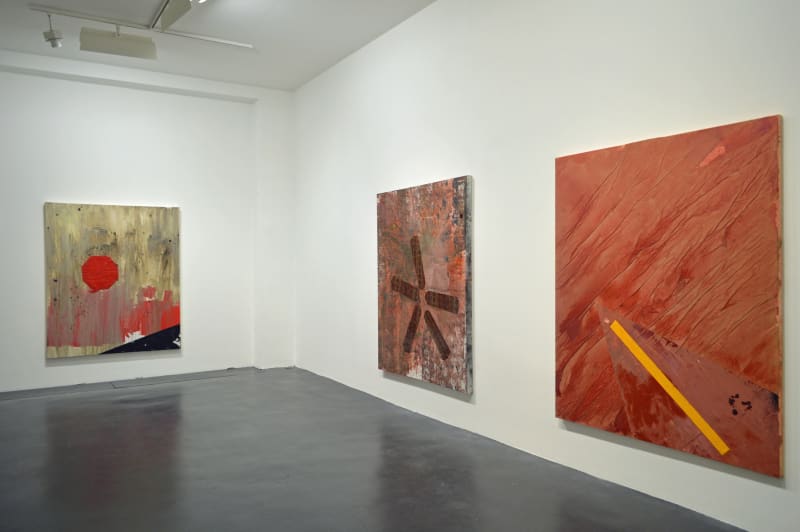The Galerie Nathalie Obadia is very pleased to present the exhibition Stairway as its second exhibition of the work of Brenna Youngblood, after Spanning Time in Brussels in 2013. It is the artist's third solo exhibition in Europe.
Following a very busy decade, the L.A.-based artist Brenna Youngblood has emerged from the post-black generation as one of the unquestioned rising talents of the Afro-American art scene in California. Although her work was originally linked to photography and its different manners of presentation (in particular through collage and conceptual photography), for some years now she has engaged herself in painting and sculpture, producing a body of work that is resolutely tied to reality while moving in the direction of increasingly manifest and radical instances of abstraction.
Youngblood will present 12 recent paintings (all dated 2014) which take fragmented elements as the starting point for deepening her reflection on the notion of "recomposition". She produces paintings from dissimilar elements and materials, which she assembles on the canvas. To create powerful images, she combines pieces of paper (bank notes, vinyl paper, sticky paper, imitation wood, wallpaper, personal photographs, found photographs that she cuts out, photocopies, cardboard letters), objects (fan blades, shoe soles) and paint (acrylic, aerosol, pigments, stains, dripping, impasto, resin, transparencies, lumps, varnish). Visually complex and conceptually powerful, Brenna Youngblood's paintings make use of elements taken from everyday life. She makes these images and objects disappear beneath thick layers of paint, which she then scrapes away again to reveal a hidden image, in the same way an archaeologist removes layers of earth. She takes representational objects and images from the reality around her and renders them abstract, all the while allowing them to retain their outward appearance from their previous life and primary function. What interests Youngblood in her compositions is to disrupt what is familiar to us in order to question the diversity of significances encompassed by images and objects in our everyday world.
The process of construction of each work is complex and not easily divined, but these hybrid and kaleidoscopic structures - sometimes rendered in low relief - are veritable narratives whose detail begs examination. Brenna Youngblood's inspiration for these accounts arises from her private life, her time, her life in Los Angeles, the grids of city and town streets, local communities and peoples from which she herself comes, those in crisis or difficulty and with marginal and multicultural identities. She also employs the country's temporal, geographic, cultural and folkloric artefacts - typical Americana - to question the given history of the United States.
Brenna Youngblood investigates the formal notions of history and art that she freely employs (Gestural Abstraction, collages, Color Field in her composite monochrome works, reminiscences of Robert Rauschenberg) in her portraits, landscapes, still-lifes, interiors and abstractions so as to stimulate eminently provocative and political questions regarding issues of identity, colour, class and memory.

